
 A Minnesota PBS Initiative
A Minnesota PBS Initiative
"War is Hell," they say, after much emotional and physical trauma is experienced by the military, plus the civilian population of the occupied country. A frustration of the U.S. Military is not recognizing the "Real" enemy. A young boy tries to sell one a Coke during the day then might take up arms and shoot at you during the night time hours under the cover of darkness...
Aboard the hospital ship Repose, we try to be as objective and fair as possible. A few beds onboard are designated as a United Nations Ward for Vietnamese civilians or, even a Viet Cong prisoner or two, provided they need specific medical care. However, our G.I.'s always have first priority.
The white ship with a large red cross painted amidships sails up and down the coast 24 hours a day. It never anchors, even refuels at sea.
The huge ship was mothballed after the Korean War. A few years later it is refurbished and staffed at a cost of 9.5 million dollars (Cheap by today's standards) It now contains the latest medical equipment for the urgent medical needs of another war-torn country.
The sparkling new Laboratory is located amidships. It contains a new Cytoglomerator machine, developed by Dr. C. Huggins from Massachusetts General Hospital. He has revolutionized blood storage with his discovery of adding glycerol to frozen red blood cells then using the Cytoglomerator to store frozen blood indefinitely, and reconstitute it when needed.
Also, most members of the ship's crew donate fresh blood every three months. In a medical crisis donated blood from other military and their dependents is flown in via helicopter from U.S. bases in Japan. When there is no refrigeration the blood is stored in newly invented Styrofoam boxes for transport. These boxes double the shelf life of the precious liquid.
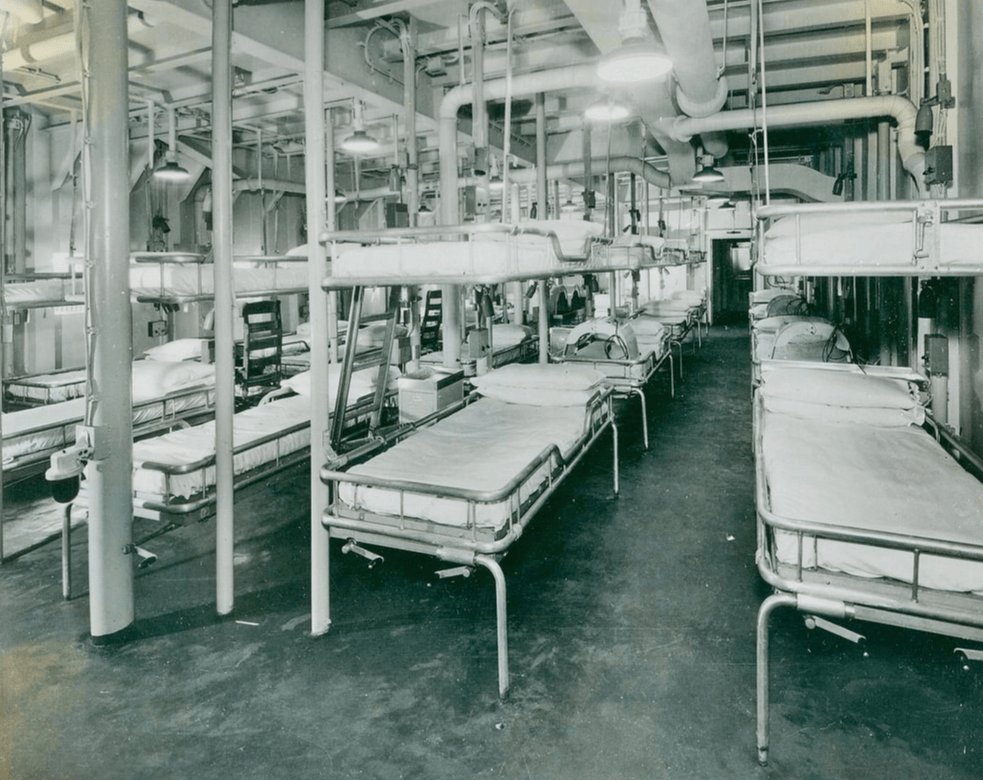
Photo courtesy of Navy Medicine.
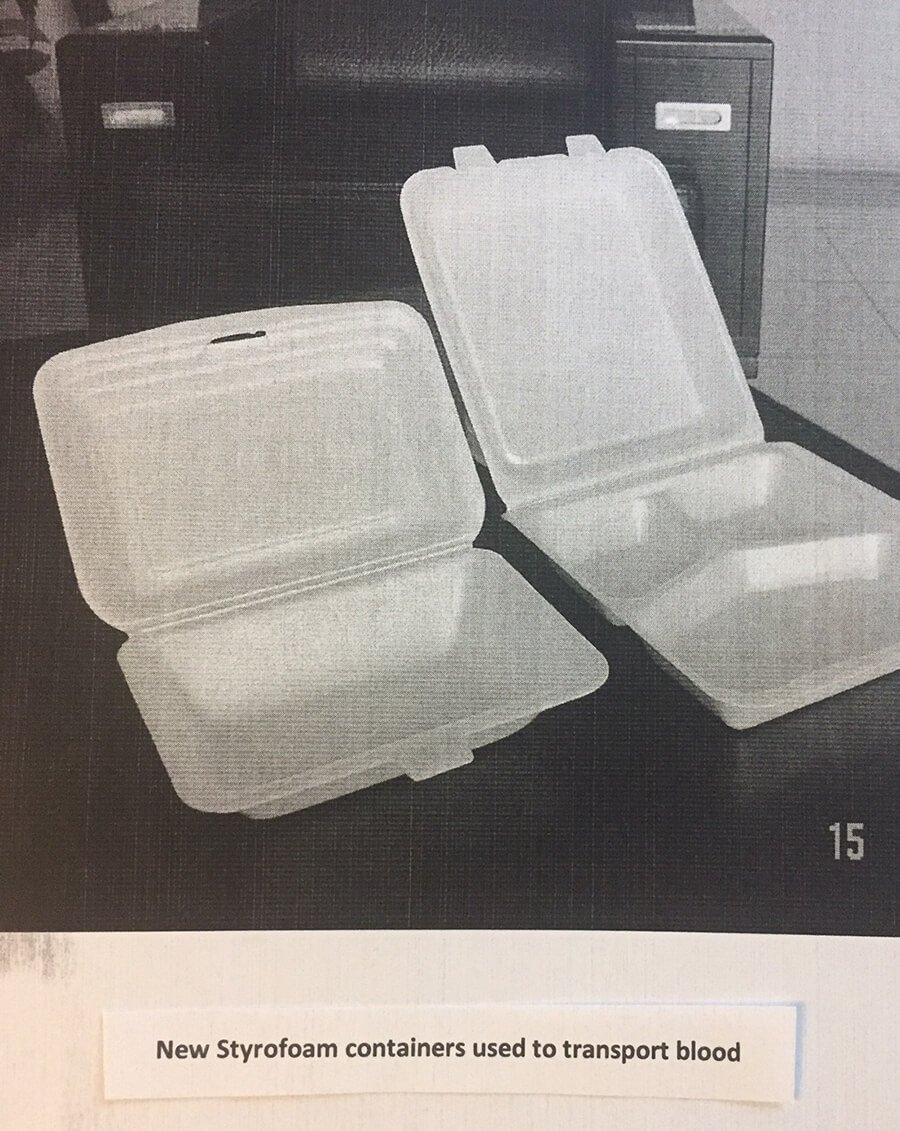
The new machine has only been used on Monkeys, although with great results. This machine accompanies Dr. Debakey onboard.
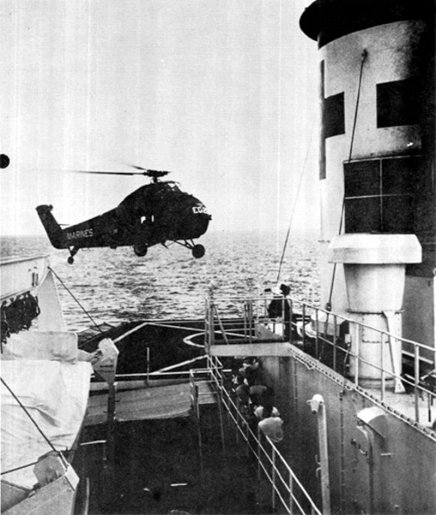
A Sikorsky UH-34D Seahorse of Maine Medium Helicopter Transport Squadron 263 (HMM-263) prepares to land wounded on the U.S. Navy USS Repose (AH-16) off the coast of Vietnam, in 1966. Photo courtesy of U.S. Navy.
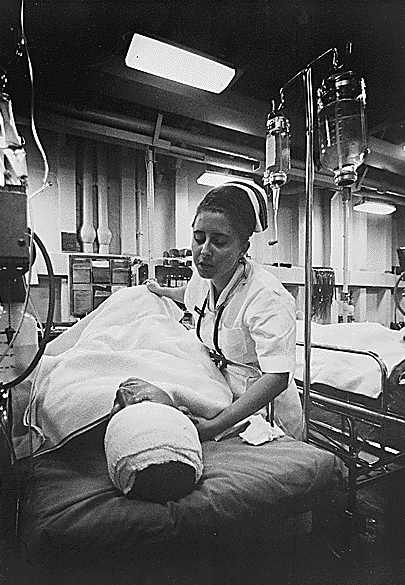
Navy Nurses. Lieutenant Commander Dorothy Ryan checks the medical chart of Marine Corporal Roy Hadaway of Calera, Alabama aboard the hospital ship USS repose off South Vietnam. Miss Ryan, from Bronx, New York is one of 29 nurses aboard the hospital ship selected from 500 volunteers of the Navy Nurse Corps. The patient is an American soldier in Vietnam War. Photo courtesy of U.S. Navy.
The new concept of "Triaging" patients is used for all incoming patients to the Repose. They arrive by helicopter, are transported to the Triage room near the helipad, then sorted by specially trained medical staff and classified as: Medical, Surgical, or Psych. The Triage concept is the precursor to the modern day E.R.
A Psych diagnosis from PTSD and the overall stress of war is the most common. Next is a Medical diagnosis of chronic foot ulcers and infection because the soldier's feet never dry out in the swampy jungle terrain. Another common Medical diagnosis is Malaria. The remaining diagnoses are Surgical.
The principles of the M.A.S.H. (Mobile Army Surgical Hospital), is adapted to the Repose. The concept was conceived by Dr. Michael Debakey from Baylor Medical Center in Texas at the end of WWII, used in Korea, and now Vietnam. He perfected the M.A.S.H. Operating Room staffing for the Military. Studies have shown that any patient that makes it to one of these units has a 97% chance of survival; an encouraging statistic for soldiers in combat.
A Heart/Lung machine is required for open heart surgery to bypass the two organs at time of surgery. During this war the H/L machines are still very large and cumbersome, taking up valuable, limited space in the O.R. They are not very mobile either.
Dr. Debakey invents two important mechanical concepts during this war. First: A "Peristaltic Pump: It has a circular rotor that squeezes a flexible tubing allowing the fluid in the tube (Blood) to be moved along. Second: The H/L machine is decreased in size to that of a T.V. set, a major improvement. Essentially, the blood is transported via the Pump through a copper mesh (Similar to the so called "Chore Boy" that grandma used to wash pots and pans when doing dishes.) In the mesh the oxygen transfer takes place.
However, the new machine has only been used on Monkeys, although with great results. This machine accompanies Dr. Debakey onboard.
Meanwhile, a Catholic Mission in the DaNang area transports a heart patient to the Repose. I happen to be assigned to Triage duty that day. He looks to be 80 years old but is more likely 50, very frail, thin and wrinkly. I do not speak Vietnamese nor him English. During assessment he uses crude sign language to let me know he needs to have a bowel movement. I quickly transport him to the nearby toilet (Head.)
Once at the stall, I realize he has never seen a toilet before, but seems to understand the concept. With the lid down he places his feet on TOP of the lid and squats in the sitting position. Nature takes its course immediately. When done, I point to the lever on the right side. He pushes the lever down, then up, not once but pumps it several times, while revealing the biggest grin ever. I also join his smile, giggle really. His teeth are black from the chronic use of Beatle Nut that gives him a slight high when chewed. However, the large grin represents a basic human bonding. No need to verbalize now...
Open heart surgery on him the next day is a huge success and acclamation. CBS News had flown in with the surgeon from Texas to capture the moment. I assume the news makes it all the way to Walter Cronkite (No CNN here.) The reputation of Dr. Debakey grows exponentially. (He performs open heart surgery on Russia's Boris Yeltsin some 30 years later.)
The forerunner to the modern day Respirators (Ventilators) was developed during the polio epidemic of the 1950's. This was the Iron Lung era. However, these units are too cumbersome and heavy to use in a battlefield situation. The new Intensive Care concept and setting is much more practical for treating severely wounded patients on the Repose.
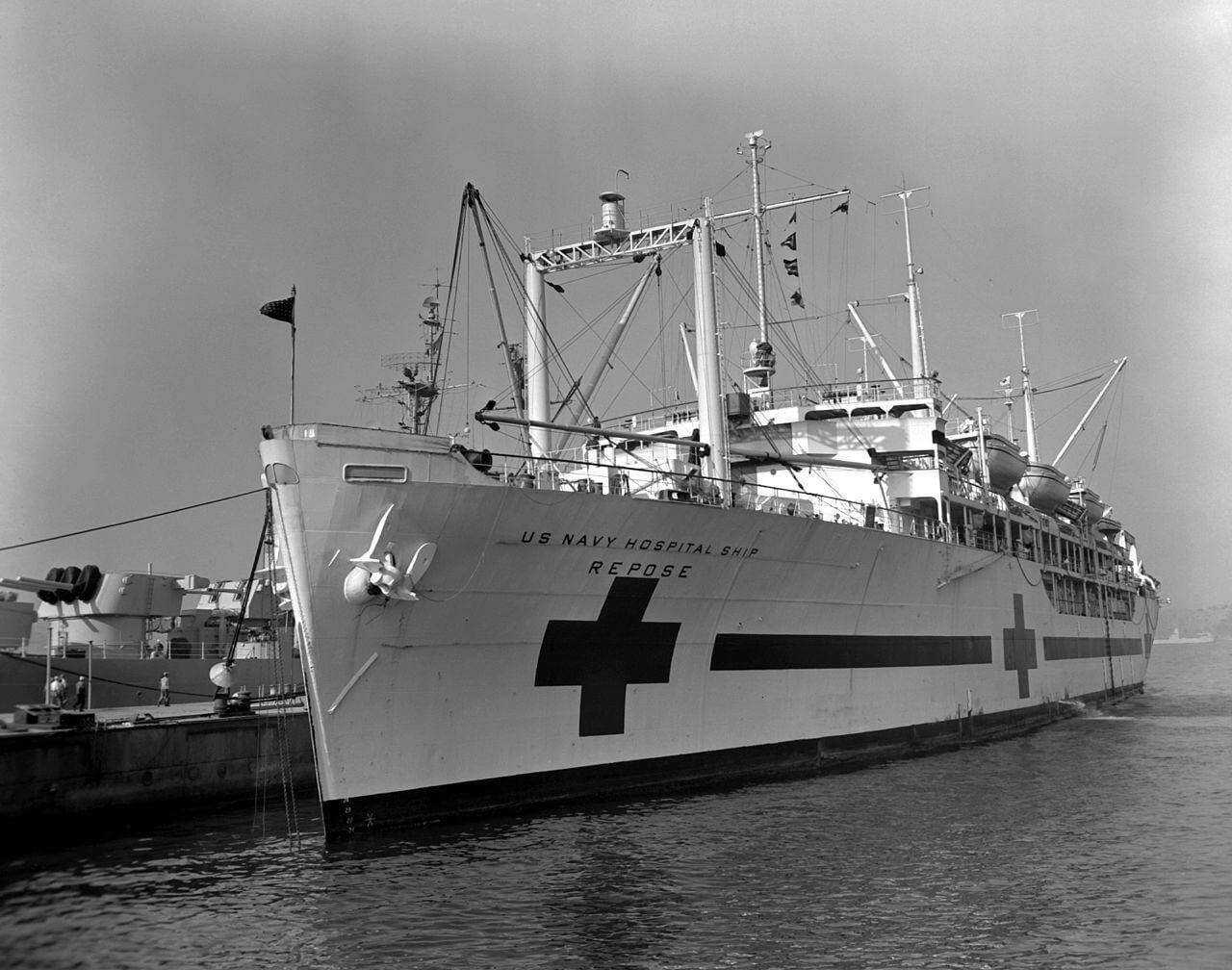
The U.S. Navy hospital ship USS Repose (AH-16). Photo courtesy of U.S. National Archives.
Forrest Bird, a military Aviator from California has invented the Bird Mark VII Respirator that works on a principle much like the mask that delivers oxygen to pilots at high altitude. The advantage of the Mark VII is it does not need electricity to operate. The mechanics are simple in that two apposing magnets, one for inspiration, and one for expiration open a gate to deliver pressurized oxygen that expands the lungs of the patient. The disadvantage is oxygen concentrations cannot be controlled, and in high pressure situations the magnetic gates in the unit take longer to close and this increases the oxygen concentration delivered.
Obviously, oxygen is a life-saving element. However, these high concentrations for long periods can chemically injure the 300 million microscopic air sacs in the chest, especially in patients that already have compromised breathing. To complicate matters, many critically ill or injured patients develop what is called "Shock Lung," also known as Acute Respiratory Distress Syndrome. This can happen in patients in cases of trauma, pneumonia, and/or high fever due to infection (Sepsis). ARDS impairs the lungs ability to exchange oxygen and carbon dioxide within the tiny air sacs. Many of these patients require ventilator care to survive.
Story Themes: 1964, 1965, 1966, 1967, 1968, Brent Hanson, Corpsman, Dr. Michael DeBakey, MASH, Medical Advances, Medical Personnel, Minneapolis, Navy, Read, USS Repose